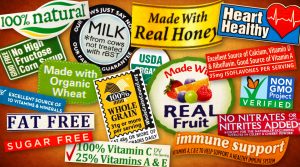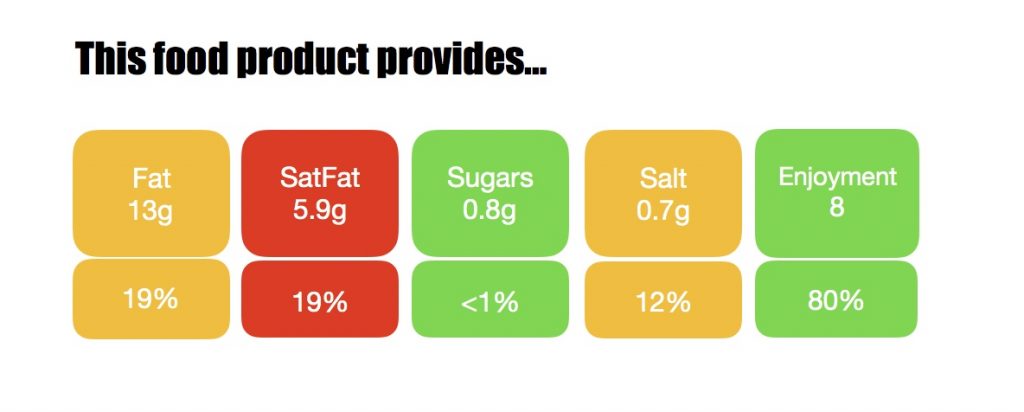Different countries have different approaches to food labels, and follow different regulations. Supposedly, as you learn to read labels, you become better at it and learn to make sense of the different facts and figures.
Why is it useful?
It can help you follow a balanced diet, helping make sure you get a good balance of fats, proteins, carbs and micro-nutrients. How easy this is, remains to be seen.
It can help you monitor levels of sugar and salt in particular which may have links to a number of diseases such as heart disease, cancer and diabetes.
Food industries often do not have your interests at heart, false claims are made and they can use cunning ways to tell you what is, and is not, in a product. A common one is saying product X has Omega 3 (good), but failing to say it also has lots of Omega 6 (not so good).
If you have allergies, you need to know what ingredients are in the products you buy. Likewise, if you follow special diets, eg. if you are Coeliac (intolerance to gluten found in wheat, barley, oats), lactose intolerant, or have diabetes type 2, you need to know what you are eating. Also certain religious beliefs have dietary requirements, so food tracking is important.

Here are 5 things I have learnt about reading food labels that I think may help me improve my health.
#1. Exaggerated Claims
You start to become aware of all the tricks the manufacturers are using. E.g. Funny or exaggerated claims abound – see below for more.
# 2. The first is the most
Ingredient lists start with the one that there is most of. I hadn’t realised this before, so if you see chocolate advertising say, 30% cocoa on the cover (which is the good part of chocolate), but then see it appears at the bottom of the ingredients list, you know it is not the main ingredient. So, it is likely that sugar, in its many guises, predominates and so it may not be very good for you.
# 3. Daily Guidelines are a bit bizarre and random
The more I read them, the more I take them with a pinch of salt. Yes, they are useful, but I have certainly sometimes got caught up in too much detail that doesn’t make sense.
When you think about it, it is unlikely you will consume all the nutrients you need in a day, but you may well do so over a week; so references don’t necessarily help. Whilst you can minimise levels of say, saturated fat (if you choose), are you really going to add it all up for all products you eat in a day? Also they are based on averages, and of course everyone; men, women and children all have different needs.
It’s hard to know you are balancing your diet just by doing this on a daily basis – you need to track for a week and look back at the whole week to see the balance or unbalance.
Also you need to be careful if amounts are the normal per 100g, or per serving, and what a serving is exactly – it may be different from your idea – it helps to check how many servings per package.
# 4. You can still eat stuff after the ‘Best Before’ date
That is just a guide. Quality is potentially lower rather than safety being an issue. However you should not consume goods after the ‘Use By’ date.
# 5. Not all products have to show nutritional value
Manufacturers only need to show nutritional value if they make a health claim. So not all products have to show it.
However, all food labels making health claims must be based on accepted scientific evidence and approved by the Health Authority of that country.
When it comes to diets and related products being sold on the internet though, wow, they can say whatever they want. Who regulates these?
Final thought, I originally thought all additives are bad, you know E-numbers – they are terrible for us, aren’t they? Well that depends on what we mean by ‘terrible’.
Are food additives good or bad? You can find out more here. In countries such as the Australia, the USA and the UK artificial additives (E-numbers) have to be tested and approved to be safe.
http://understandingfoodadditives.org.uk/index.htm
The long and short of it, is that yes there are lots of different additives, but allergies apart, they should be mostly safe, and most importantly they allow us to keep food for longer.
So, there is a compromise, but it is an informed choice we can make.
And really finally, those exaggerated food claims…

Funny or exaggerated health claims on labels….
‘Healthy’ has no definition from the Food and Drug Administration, so you see it everywhere. It can mean anything and nothing.
‘100% Teff‘ I saw in some teff biscuits. Turns out the biscuits only contain 30% teff, but the teff they contain is pure 100% teff. Hmmm!
‘Made with Whole Grain’. Most bread I have found with whole grain claims, also contains (next in the list) processed grains and flour; often quite a few. So while the main ingredient is whole grain, there is lots of processed grains (which contain less nutrients and have simple carbohydrates in there too. The key apparently, is to look for ‘100% Whole Grain’.
‘Low fat’ only means it has <5 g fat or <3g in some countries. This is ok, but we can also see ‘Reduced Fat’ which apparently means it only has to have 25% less fat than the original product. The original product may have loads of fat, and so the ‘reduced fat’ version may still have lots too. The cleverness of using relative values!
‘Low calorie’ means it only has <40 cals per 100 g
‘Light’ has no legal definition – it is a loaded marketing word.
‘Natural’ has no legal definition (other than it mustn’t contain ‘synthetic substances’) – it is a loaded marketing word. Such products that I have seen often contain sugar, honey, high fructose corn syrup (HFCS); all could be argued to be ‘natural’, but they are not at all healthy.
Jams with ‘Real Fruit’ – What on earth does that mean? What is unreal fruit? Is that plastic fruit that the competitor is putting in their jam? And although a jam may contain ‘real fruit’, it may contain lots of other less healthy stuff, such as excess sugar; disguised under 60 different names!
So good to look beyond the adverts on product packaging and start looking more closely at food labels!

